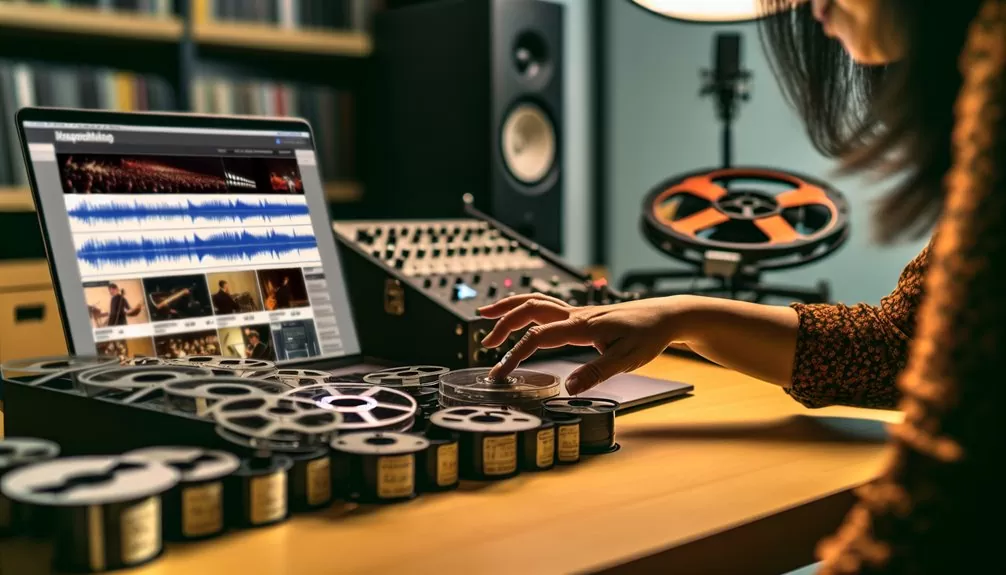
The Live Music Archive offers musicians a platform to preserve and share their concert performances with a global audience. Artists must satisfy several key requirements before contributing their work. These include verifying artist identity, securing permissions, ensuring copyright compliance, and delivering quality recordings. The technical specifications demand proper organization, sound engineering standards, and comprehensive metadata. A structured submission process follows these preparations. Musicians who navigate these steps successfully gain access to a community of dedicated listeners and a permanent digital home for their live performances.
Understanding the Live Music Archive’s Mission and Scope
The Live Music Archive operates with three fundamental principles that guide its mission and scope. First, it preserves and distributes non-commercial live recordings. Second, it requires explicit permission from performers. Third, it maintains high archival standards for audio quality and metadata accuracy.
Musicians considering contributions must understand these archival policies. The platform exclusively hosts recordings from artists who formally opt-in through their permission system. Additionally, copyright considerations remain paramount—only recordings authorized by rights holders are accepted. The Archive does not host commercial releases or soundboard recordings without explicit documentation of permission, protecting both the Archive and contributing artists from potential legal complications.
Meeting the Essential Requirements for Artist Participation
Before musicians can share their live performances in the Archive, they must satisfy several critical eligibility requirements established by the platform’s governance. These include explicit permission from all performers, copyright clearance for covered material, and high-quality audio recordings meeting technical specifications.
Artists must verify their identity through an established verification process while protecting artist’s rights through proper documentation. The Archive requires confirmation that distribution complies with existing record contracts, ensuring equitable compensation for all contributors. Additionally, performers must agree to the Archive’s open-access policy that allows free streaming while maintaining certain commercial restrictions on redistributed content.
Preparing Your Live Recordings for Submission
Successfully preparing live recordings for Archive submission requires meticulous attention to technical specifications and organizational protocols. Artists must implement systematic file organization, labeling each recording with consistent naming conventions that include date, venue, and track numbers.
Audio editing constitutes a critical preparation phase. Musicians should normalize volume levels, trim silence, and repair significant audio issues without compromising authenticity. Ideal submissions maintain high-fidelity sound while eliminating distracting artifacts.
Files should be converted to lossless formats (FLAC preferred) and accompanied by complete metadata including setlists, personnel, and recording equipment details. Creating a separate text file with contextual performance information further enhances the archival value of the submission. Additionally, it’s essential to ensure that the files are organized systematically, allowing for easy navigation and retrieval. This practice is particularly valuable for researchers and enthusiasts alike, especially when considering the best countries with no income tax, where financial considerations may impact the accessibility of such resources. By prioritizing format, metadata, and organization, the longevity and usability of the archive are significantly improved.
Navigating the Upload Process Step-by-Step
Once artists have properly prepared their recordings, navigating the Live Music Archive upload process requires following a structured sequence of steps designed to ensure proper integration into the Archive’s vast collection.
Musicians first create an Archive.org account and complete the permission form. Next, they upload audio files that incorporate proper audio engineering techniques, ensuring consistent levels and balanced frequency response. The submission form requires detailed metadata including tracklists, dates, and venue considerations such as acoustics and location.
Artists then select appropriate licensing options and submit for review. After moderation, approved recordings join the Archive, instantly accessible worldwide while preserving the unique sonic characteristics of each performance venue.
Building Your Archive Collection and Engaging With Listeners
Building a meaningful Archive collection extends beyond the initial upload process to encompass ongoing curation and active listener engagement. Musicians should consistently add new performances while organizing shows by tour, venue, or recording quality for optimal discoverability.
Effective music promotion strategies include embedding Archive links on official websites, sharing notable recordings during significant band anniversaries, and highlighting listener statistics. Social media engagement proves essential—artists can announce new uploads across platforms, spotlight fan favorites, and acknowledge tapers’ contributions.
Responding to listener comments and acknowledging audience participation builds community around archived performances, transforming passive listeners into active supporters of both the Archive and the artist’s broader musical journey.
